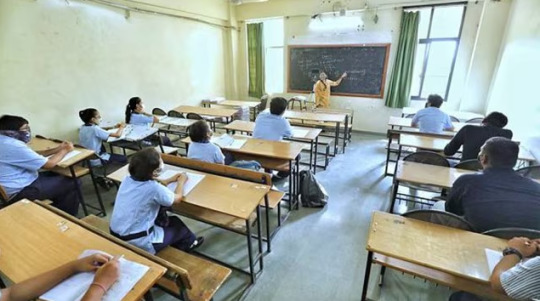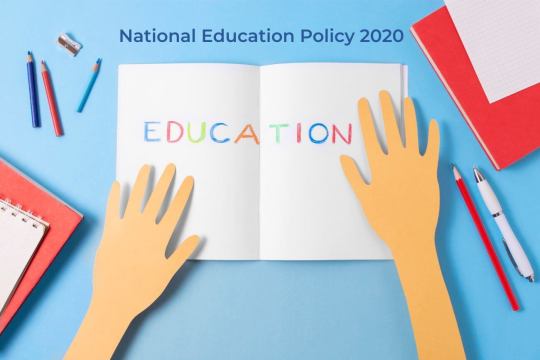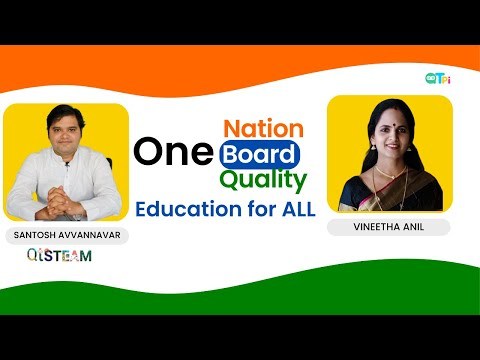#nep 2020
Text
post-covid CBSE having a competency kink:

#yes I'm doing cbqs whatdyumean#fucking competency based question paper#40 fucking percent#Like why not kill us straight up?#cbse 12th#NEP 2020#cbse board exams#desiblr#exams season#shitposting#cbse
37 notes
·
View notes
Text
New Guidelines for Bagless Days: Making Learning Fun and Practical for Classes 6-8
The Union Ministry of Education has unveiled new guidelines aimed at making learning more joyful and practical for students in Classes 6 to 8. Announced on the fourth anniversary of the National Education Policy (NEP) 2020, these guidelines introduce the concept of “bagless days” to enhance students’ learning experiences.

What Are Bagless Days?
Starting this academic year, students in Classes 6–8 will experience a 10-day period where they won’t carry their school bags. Instead, they will engage in hands-on learning by interning with local vocational experts such as carpenters, gardeners, potters, and more. This initiative is designed to bridge the gap between theoretical knowledge and practical skills, helping students explore various vocational crafts and potential career paths.
Key Highlights of the Guidelines
Integration into Curriculum: The bagless days are meant to be an integral part of the curriculum, not just an addition. The aim is to reduce the boundary between bookish knowledge and real-world application.
Vocational Exposure: Students will participate in practical courses that offer a survey and hands-on experience of important vocational skills. Activities might include carpentry, gardening, metal work, pottery, and other crafts tailored to local and state needs.
Flexible Scheduling: Schools can schedule these 10 bagless days across the academic year, ideally spreading them over two or three slots. This flexibility allows for the integration of both indoor and outdoor activities, depending on the school’s annual work plan.
Suggested Activities
The guidelines include a variety of engaging activities such as:
Visits to vegetable markets and charity organizations
Surveys and report writing on topics like pet care
Creative activities such as doodling, kite making, and flying
Organizing book fairs and visiting biogas plants and solar energy parks
These activities are designed to offer practical learning experiences that extend beyond traditional classroom settings.
Additional Initiatives
On the NEP anniversary, several other educational initiatives were also launched, including:
Dedicated TV channels for learning various Indian languages
Tamil language learning resources
Career guidance guidelines and mentoring programs
National Professional Standards for Teachers in braille and audiobooks
A school innovation marathon by AICTE
Books and lecture notes promoting Indian knowledge systems
Union Education Minister Dharmendra Pradhan highlighted that the NEP 2020 aims to bring transformative changes to the education system. He emphasized that these changes are crucial for nurturing a new generation of learners, harnessing the country’s demographic dividend, and driving socio-economic development.
The newly introduced bagless days are a step towards making education more experiential, engaging, and relevant, helping students connect their academic learning with real-world skills.
0 notes
Text
Clevered: Artificial Intelligence Lab for Schools and the Implications of NEP 2020

In the ever-evolving landscape of education, the integration of Artificial Intelligence (AI) has emerged as a transformative force, offering boundless opportunities for learning and innovation. With the advent of the National Education Policy (NEP) 2020, India has taken significant strides towards embracing AI in education, recognizing its potential to equip students with the skills needed for the future. In this context, the establishment of AI Coding Labs in schools stands as a pivotal initiative, poised to shape the next generation of thinkers, problem-solvers, and creators.
Understanding the Significance of AI Coding Labs:
AI Coding Labs serve as dynamic spaces where students are introduced to the fundamentals of AI and coding from an early age. These labs provide hands-on experience, fostering a deep understanding of AI technologies such as machine learning, neural networks, and natural language processing. By engaging in real-world projects and challenges, students develop critical thinking, computational thinking, and problem-solving skills essential for success in the digital age.
NEP 2020 and the Paradigm Shift in Education:
The National Education Policy (NEP) 2020 marks a paradigm shift in the Indian education system, emphasizing holistic development, flexibility, and the integration of technology. With its focus on skill-based learning and experiential education, NEP 2020 aligns seamlessly with the objectives of AI Coding Labs, providing a framework for their implementation across schools nationwide.
Key Objectives of AI Coding Labs:
Promoting Digital Literacy: AI Coding Labs play a crucial role in promoting digital literacy by familiarizing students with AI technologies and programming languages. Through hands-on activities and projects, students develop fluency in coding, enabling them to navigate the digital landscape with confidence.
Fostering Innovation: By encouraging experimentation and exploration, AI Coding Labs foster a culture of innovation among students. Through collaborative projects, students learn to apply AI concepts creatively, developing solutions to real-world problems and contributing to technological advancement.
Building Critical Skills: AI Coding Labs focus on nurturing critical skills such as problem-solving, analytical thinking, and creativity. Through interactive learning experiences, students learn to approach challenges methodically, fostering resilience and adaptability in the face of change.
Preparing for the Future: In a world increasingly shaped by AI and automation, AI Coding Labs prepare students for the jobs of tomorrow. By equipping them with in-demand skills such as coding, data analysis, and AI proficiency, these labs empower students to thrive in the digital economy.
Integrating AI Coding Labs into the Curriculum:
The successful implementation of AI Coding Labs requires a strategic approach that integrates them seamlessly into the existing curriculum. Schools must allocate dedicated resources for the establishment and maintenance of these labs, including trained educators, infrastructure, and software tools. Furthermore, collaboration with industry partners and experts can enrich the learning experience, providing students with insights into real-world applications of AI.
Impact of AI Coding Labs on Students:
The impact of AI Coding Labs extends far beyond the acquisition of technical skills. By nurturing curiosity, creativity, and collaboration, these labs cultivate a growth mindset among students, empowering them to embrace lifelong learning and adaptability. Moreover, by fostering diversity and inclusivity, AI Coding Labs ensure that all students have equal access to opportunities in the field of AI, regardless of their background or socioeconomic status.
Conclusion:
In conclusion, the establishment of Artificial Intelligence Lab for Schools represents a significant step towards realizing the vision of NEP 2020 and preparing students for the challenges and opportunities of the future. By equipping students with the skills, knowledge, and mindset needed to thrive in a digital world, AI Coding Labs empower them to become active contributors to society and drivers of technological innovation. As we embark on this transformative journey, let us embrace the potential of AI in education and pave the way for a brighter, more inclusive future for all.
#artificial intellegence#artificial intelligence lab#Coding Lab for school#AI lab for School#Artificial Intelligence Curriculum for schools#NEP 2020
0 notes
Text
Tech-Driven Education: Exploring the Benefits of Smart Classrooms
The NEP 2020 emphasises using technology to improve educational standards and offers a better learning atmosphere for students. Digital classrooms can improve and develop the teaching and learning experience.
0 notes
Text
0 notes
Text
Empowering Futures: The NEP's Vision and the Critical Role of Career Counseling Workshops
New Delhi, March 10, 204 – As India embraces the transformative National Education Policy (NEP) 2020, a renewed focus on holistic education and skill development comes to the fore. The NEP’s ambitious blueprint aims not just to overhaul the academic structure but to realign education with the evolving demands of the 21st-century workforce. In this context, career counseling workshops are emerging…

View On WordPress
#Career Counseling#Career Workshops#Educational Policy#Future Workforce#Holistic Education#Multidisciplinary Learning#NEP 2020#Skill Development#Student Guidance#Vocational Training
0 notes
Text
5+3+3+4 Education system according to NEP 2020

The National Education Policy 2020 of India replaces the traditional 10+2 structure with the new 5+3+3+4 education system, which is one of its most effective elements. The new educational plan aims to create a more comprehensive foundation for secondary school by using the 10 plus 2 years structure, which was focused on a constructive method of teaching. For example, the 5+3+3+4 system gives students more freedom of choice by allowing them to acquire an extensive understanding at the elementary level before letting them choose the educational path they want to take later on with the guidance of people involved in teaching jobs. Students can now develop their talents and interests in an even more tailored and individual way thanks to this revised approach, which better prepares them for their future pursuits.
What exactly is the 5+3+3+4 Education System?
There are no additional school years in India's 5+3+3+4 education system. Since the length of time a student spends in an educational institution is constant, the heavy burden has lessened. With a 5+3+3+4 educational pattern, the National Education Policy 2020 includes playschools as well as nursery and kindergarten classrooms in its definition of "formal education." This strategy takes into account the distinctions between professional and academic interests as well as extracurricular and curricular activities. The framework makes sure that every factor is taken into account for a comprehensive educational experience. Students can flourish and grow in this supportive environment, enabling them to realize their greatest potential.
Defining the 5+3+3+4 structure
Based on the new school education system defined in NEP 2020, students are expected to spend five years in the Foundational stage, three years in the Preparatory stage, the Middle Stage lasts three years, and the Secondary Stage lasts four years. The phases have been separated into those that correspond to a child's cognitive stages in early childhood, school, and secondary school.
The many levels of the new school education system are broken down by age as follows-
5 year foundational stage:
For children ages 3 to 8
Preschool, Anganwadi, Class 1, Class 2, and Class 3 The national education policy states that the fundamental level of education will include two years of primary school (classes 1 and 2) after three years of preschool or Anganwadi education. The focus of this stage will be on the growth of language and based on play or activity-based teaching strategies.
The Three-Year Preparatory Stage:
For children 8 to 11 years old
For classes in grades 3 through 5 Language and numeracy skills will be emphasized during the preparatory time. Here, relationships in the classroom and the element of discovery would be used, as well as play and activity-based teaching and learning.
Three years of middle-stage
11 to 14 years of age
6th through 8th-grade classes The critical learning objectives that will be the focus of this level of school instruction, according to NEP 2020, mark a considerable change from the rote learning techniques that have traditionally been employed in our educational system.
This stage will be centered on experiential learning in the sciences, arts, mathematics, social sciences, and humanities.
Four years at the secondary stage
The age group of 14 to 18 years age
for grades 9th through 12thThis level will include courses 9 and 10, as well as classes 11 and 12. The biggest shift in these seminars is the move to a multidisciplinary system where students can select from a variety of topic combinations based on their skills and interests as opposed to being rigidly categorized into the Arts, Science, and Commerce divisions. Once more, this level will place emphasis on critical thinking and mental flexibility.
Advantages of the 5+3+3+4 configuration
Lays the fundamental framework
India faces enormous difficulties when it comes to transferring children from Anganwadis and playschools to formal education. Children require a solid foundation at the fundamental level in order to be able to continue learning as they get older.
The new initiative emphasizes the significance of development by enrolling kids between the ages of 3 and 6 in formal education.
If students lack the necessary language and math skills, they will not be able to teach themselves. The ability to learn for oneself could suffer greatly if the basis of learning is weak.
Practitioners as well as scholars agree that early childhood education and care (ECCE) is crucial in defining a child's future. As a result, the NEP's biggest accomplishment is perhaps the inclusion of pre-primary under its purview.
Better career guidance
Stronger career counseling services are needed to help students make the best decisions possible because the new educational system includes multidisciplinary education and topic selection in the middle school years.
Choosing favorite themes as early as middle school may put the onus of making a professional decision on the shoulders of the parents or the teacher, who is frequently ill-equipped to do so.
As a result, the switch from the 10+2 to the 5+3+3+4 system offers lots of opportunities for student growth and sheds light on the areas where schools can concentrate to advance.
Final Thoughts
The framework of the educational model has been updated from the classic 10+2 to the most recent 5+3+3+4 model. With so much potential for student progress in the new system, it is clear which areas in schools still require work. A cumulative change has also been made to the exam format. The most recent pattern update will evaluate key ideas and knowledge usage in board exams. Using scientific approaches to teaching and learning models, the educational system seeks to bring India up to par with the top nations of the globe. For all stakeholders to participate in the educational process, teaching will provide solutions for the educational infrastructure as well as a collection of school ERP & LMS components.
Source - Jobs in Education Blog
0 notes
Text

https://education21.in/iit-roorkee-to-hold-its-convocation-as-part-of-successful-3-years-of-implementation-of-nep-celebrations/
0 notes
Text
New Education Policy 2020
The Union Cabinet chaired by Prime Minister Shri Narendra Modi approved the National Education Policy 2020 on July 29, 2020. This policy replaced the 34-year-old National Policy on Education (NPE), in 1986.
Built on the foundational pillars of Access, Equity, Quality, Affordability, and Accountability, this policy is aligned with the 2030 Agenda for Sustaina.
1 note
·
View note
Text
New Education Policy 2020
he NEP 2020 aims to provide a more holistic and flexible approach to education that is more in tune with the needs of the 21st century. Read more
0 notes
Text
One Nation, One Board, One Quality: Education for All
Santosh Avvannavar in conversation with Mrs. Vineetha Anil if its time to have – one education board for India of K12/ schools. We explore the following thoughts –
1. Is it an interesting proposition to have one education board for India?
2. What does it mean to have same syllabus/ curriculum and exams?
3. Will such standardisation of education across the country eliminate the disparities that…

View On WordPress
0 notes
Text
youtube
0 notes
Text
STEMROBO Plans to Hire Innovation Engineers to train 10,000 Local School Teachers
The company focuses on training local school teachers in regional languages across the country.

Edtech company STEMROBO Technologies has announced its plans to expand its team size by 350 employees by March 2023, as per an official statement. Further, the development is aligned with the plan of empowering K-12 schools to be 21st Century Showcase Schools aligned with NEP 2020. STEMROBO plans to develop a complete ecosystem in these schools through its unique programs such as STEM Education, Robotics, Coding, AI and Experiential Learning.
EdTech STEMROBO Technologies aims to reach out to 10000 educators by next year.
Furthermore, the bootstrapped start-up aims at hiring 50% women innovation engineers from tier 2 and tier 3 cities such as Bhopal, Chandigarh, Faridabad, Coimbatore, Visakhapatnam, Dehradun, Ghaziabad, Lucknow, Ranchi, and Srinagar.
“With this recruitment drive, our plan is to have our expert innovation engineers present across each district of India who can train the school teachers in that particular region in their local language. Along with this, we are also working on building an educators’ network under our initiative ‘Tinker for Bharat’,” Anurag Gupta, founder, STEMROBO Technologies, said.
In addition, in line with NEP 2020, STEMROBO has come up with its graded computer books which are covering Computer Basics, Coding and Artificial Intelligence.
Source: http://bit.ly/3zXTQYU
Contact US
website: https://www.stemrobo.com/
Email- [email protected]
Toll Free: 1800-120-500-400,
Mobile: +91-7905087639
#Innovation Engineers#NEP 2020#STEMROBO#Tinker for Bharat#AI and Experiential Learning#Stem Education#Atal Tinkering Lab#STEM Education Atal Tinkering Lab
0 notes
Text
Exploring the Vision of NEP 2020
The New Education Policy (NEP) 2020 is an ambitious reform initiative introduced by India's government. It aims to revamp the country's education system, focusing on holistic development, flexible learning, and skill enhancement. Key highlights include the introduction of a new school curriculum, emphasis on early childhood education, promotion of multilingualism, integration of technology in education, and restructuring of higher education for enhanced employability and research opportunities.
0 notes